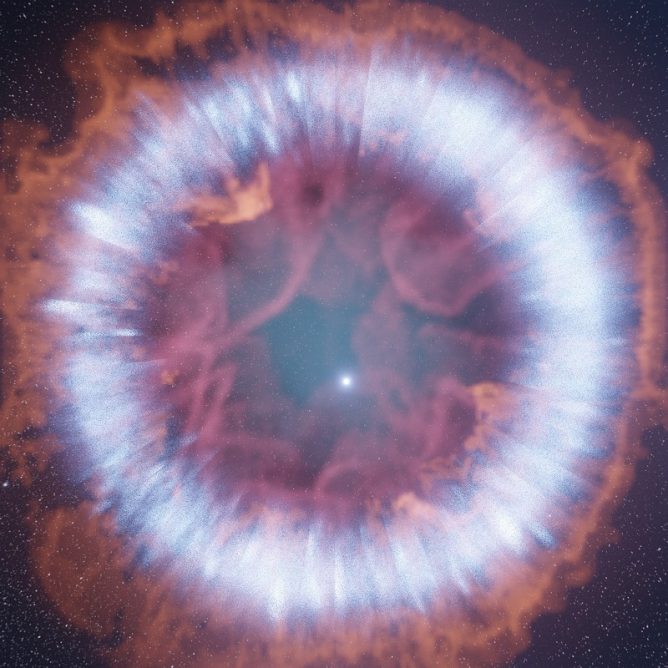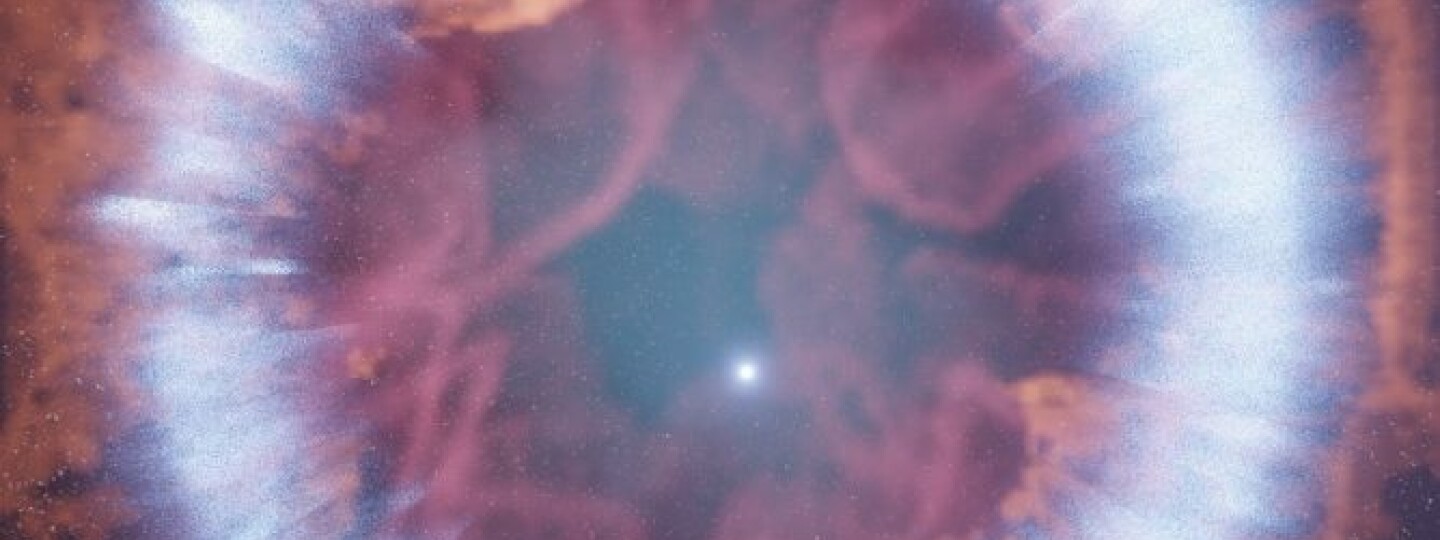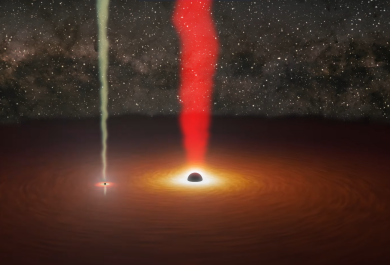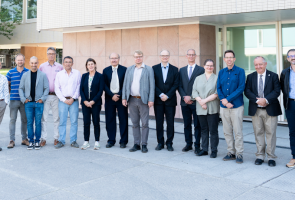An international research team has discovered the first example of a supernova, known as SN 2018ivc, showing an unprecedented rebrightening at millimeter wavelengths about one year after the explosion.
With the help of the Atacama Large Millimeter/submillimeter Array (ALMA), the analysis revealed that the dying massive star ejected a large amount of its envelope due to a strong binary interaction with a companion star that took place about 1500 years before the explosion.
In a paper published in The Astrophysical Journal Letters, the team posits that this rebrightening event in SN 2018ivc provides a missing link between supernovae that occur in binary star systems and those that involve solitary massive stars.
An astronomer’s visualization of the demise of a massive star. Credit: ALMA (ESO/NAOJ/NRAO), K. Maeda et al.

Massive stars end their life with catastrophic supernova explosions. How they evolve toward this demise is marked as a significant problem in astrophysics.
A key process that affects their evolution and its final outcome is the binary interaction since most massive stars are found in binary systems. The outer envelope of one of the binary components can be stripped away by the gravitational pull from its companion star. A fraction of the stripped gas is ejected from the binary system, forming a circumstellar medium. This happens in a brief period of time as compared to the whole life of a star. Thus, directly witnessing such a phenomenon is far too challenging.
Alternatively, one can investigate this effect long after the event took place, by diagnosing its properties, such as the amount and distribution of circumstellar medium created by the binary interaction, if such measurements can be precisely performed.
The research team tackled this problem by studying radio emission from a supernova.
Ejecta, the debris from exploded stars, expand into the surrounding space at velocities reaching 10% the speed of light. The ejecta crash into circumstellar medium, creating radio synchrotron emission. By studying the properties of synchrotron emissions, including their intensity and time evolution, it is possible to measure circumstellar medium distribution. This ability helps derive the history of how much mass was being shed by the dying massive star until the moment of supernova explosion.
In the reported work, the team spent a few years using the ALMA radio telescope array to monitor SN 2018ivc, which took place in the famous spiral galaxy M77. The millimeter-wavelength emission from the supernova had initially decayed quickly until about 200 days after the explosion, but the team noticed that it was rebrightening in the ALMA data obtained at later epochs (>1000 days). Such rebrightening in the radio synchrotron emission from supernovas is rare, previously known only for a handful of events and all at centimeter wavelengths.
In comparison, transparency of this circumstellar medium at mm wavelengths has allowed the team to get a much clearer picture at immediate environments carrying the footprints of progenitor stars than previous attempts with cm wavelengths. The reported work presents the first example in which rebrightening is caught in millimeter wavelengths, thanks to ALMA’s excellent sensitivity.

A large amount of circumstellar medium surrounding the exploding star was detected at a distance of about 0.1 light-years from the exploding star. Ejecta eventually reached this dense circumstellar medium but had not reached it in 200 days. Observed by ALMA in later epochs, the outcome of the collision was further quantified by conducting numerical modeling of this phenomenon and comparing the observed synchrotron flux and time evolution with model predictions. The team concluded that large amounts of circumstellar medium were the outcome of a strong binary interaction that took place about 1500 years before the supernova explosion.
The evolution of massive stars is categorized into two major channels: single star evolution and binary evolution. The single star channel is an outcome of a star without a binary companion, but a star in a binary can also evolve effectively as a single star if separation between two stars is adequately large. If the separation of a binary system is small enough, the binary interaction takes place far before the time of the supernova explosion, typically on the order of a million years. The star that has lost a large amount of gas at this interaction will stay quiet up until the moment of supernova explosion.
“It is very hard to know what a star was doing before it explodes, and what is the situation in its immediate surrounding regarding the effect of a companion star. That is still an open issue, but this result is an important milestone towards our understanding of stellar evolution in binary systems,” says Hanindyo Kuncarayakti from the University of Turku.
ALMA has the ToO (Target-of-Opportunity) mode with which a new transient object, such as a supernova, can be immediately observed by disrupting already scheduled queues. SN 2018ivc was observed by the ToO mode, and data analysis suggested that this was a highly interesting event. The team thus investigated its late evolution, covering the supernova position in later epochs, and found signs of rebrightening.
The Universe is filled with various transient and explosive phenomena, including binary neutron star mergers emitting not only electromagnetic radiation but also gravitational waves, stellar merger events, nova explosions, and surface explosions of massive stars, among a large variety of such explosive objects that forms the “dynamic” Universe.
The research was led by Keiichi Maeda, professor from the Graduate School of Science at Kyoto University, and Tomonari Michiyama, ALMA Joint Postdoctoral Fellow from the Graduate School of Science at Osaka University. Academy Researcher Hanindyo Kuncarayakti from the University of Turku was part of the international research group.





